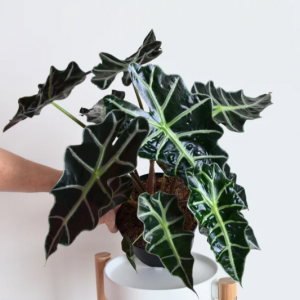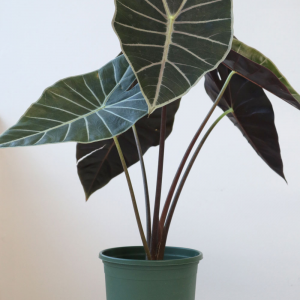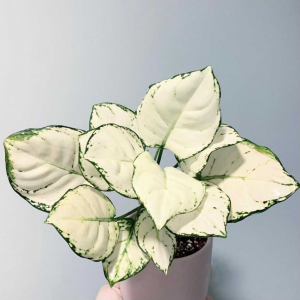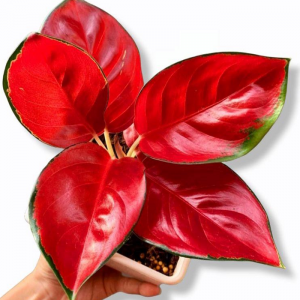


Sun
Thriving conditions include a moderately bright spot with no direct sunlight. So consider a northern facing window which provides the least amount of mid-day, harsh light. Other locations will of course work too, but make sure the plant is shaded or light is filtered (like through a curtain) to prevent direct rays. Alocasia Polly is prone to sunburned leaves upon direct sun exposure.
Water
As for water, the Polly plant will thrive with soil that is kept moist throughout. These plants do not enjoy drying out between waterings, which can make this plant more challenging to gauge when to supply more moisture. Typically, when the very top surface layer begins to get slightly dry, the Alocasia Polly is ready for water. Allow water to drain out the bottom holes of the pot to ensure the roots are getting exposure to water. Double-check that there’s no excess water standing in the saucer as this can lead to root rot. The Polly does not handle soggy soil well, so it can be a delicate balance figuring out how much water it will need. But once you have it figured out, this plant is pretty simple to care for. Remember that you will need to water more in summer and less in winter, but the soil will still indicate needs just the same.
Moisture
The Alocasia Polly can benefit from humidity. If you notice the tips are turning brown, that’s usually a sign that this plant wants extra moisture. You can either lightly mist the plant with water (be careful, as too much can cause fungus issues) or you can add a pebble layer. For a pebble layer, simply add pebbles to the bottom saucer and fill halfway with water (so that no water is touching soil or roots).








